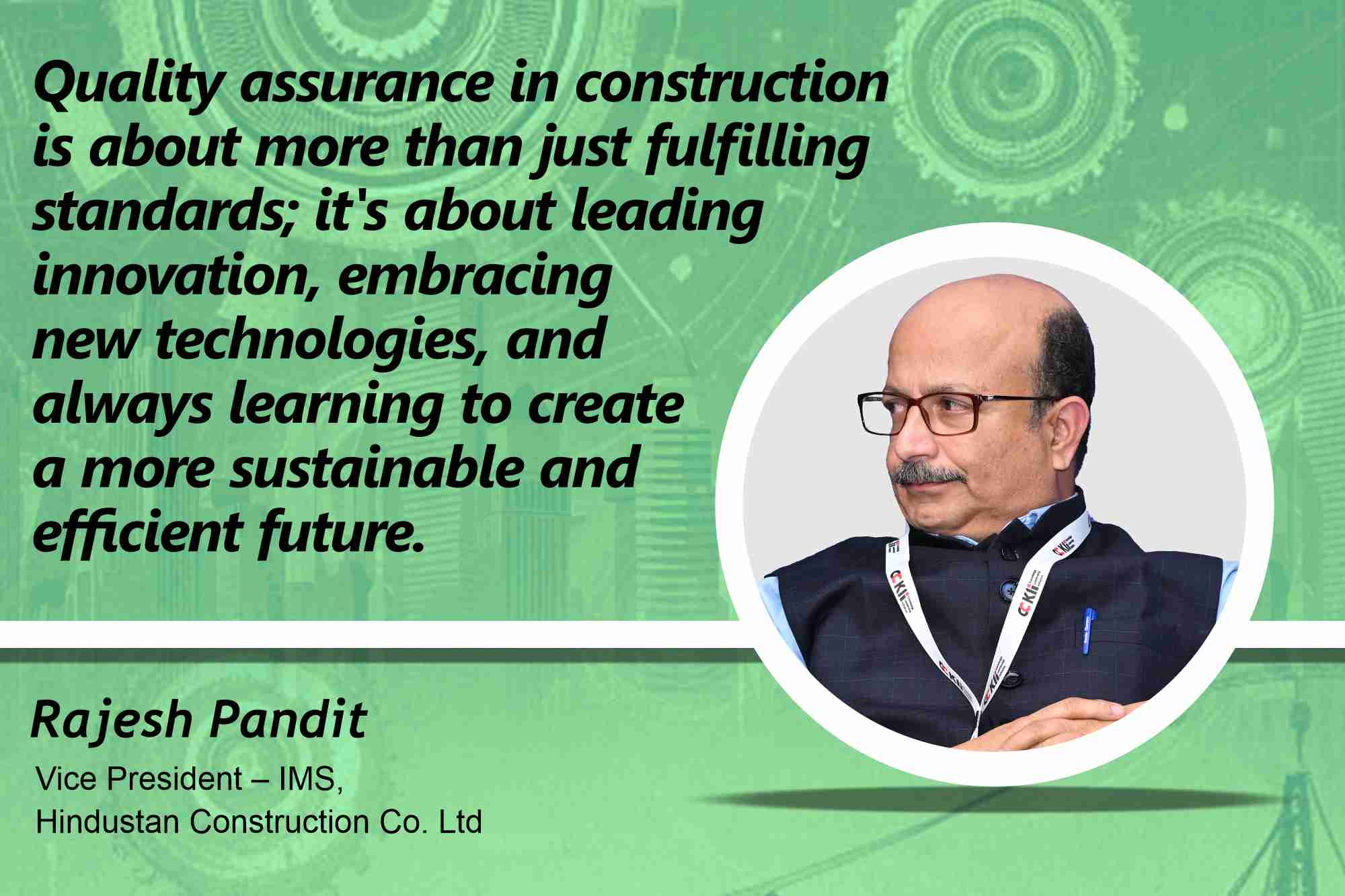Plan, Do, Check and Act
By Staff Report | October 23, 2024 6:14 pm SHARE

Quality assurance has been critical throughout his 30-year career in infrastructure. In this interview, Rajesh Pandit, Vice President—IMS at Hindustan Construction Company Ltd., discusses material advancements, emerging technologies, and essential practices for enhancing construction quality management.
What are the key components of an effective Quality Management System (QMS) in large-scale infrastructure projects?
In quality management systems, whether for large or small-scale projects, the core principle remains consistent: the PDCA cycle—Plan, Do, Check, Act. This fundamental approach underpins our entire system. Other key practices within this framework include auditing, training, and the active involvement of top management.
Additional complexities arise for large-scale projects, such as managing interfaces between different departments and carefully selecting team members, vendors, subcontractors, and specialised agencies. Continuous staff training is essential to ensure ongoing improvement.
Understanding the customer’s perspective, addressing feedback, and resolving complaints are critical aspects of quality assurance. Monitoring non-conformities and incorporating lessons learned from these inputs are crucial steps for enhancing both small and large projects.
As the business evolves, education and training become increasingly common, with market leaders organising programmes to keep engineers updated. Young engineers, the backbone of our industry, should take advantage of these opportunities to stay current with the latest technologies.
Could you elaborate on how optimising Pozzolanic materials contributes to sustainable construction practices and project efficiency?
Optimising pozzolanic materials, such as fly ash and silica fume, improves sustainable construction and increases project efficiency. By partially substituting Portland cement, these materials help to lower the carbon footprint of concrete manufacturing, which is a major source of CO2. They also increase concrete’s physical and mechanical qualities, increasing resistance to chloride and sulphate attacks, decreasing permeability, and extending structural lifespans, lowering maintenance costs. Using industrial byproducts increases recycling, decreases landfill use, and conserves natural resources, all of which accord with circular economy ideals.
Furthermore, pozzolanic materials often take less energy to manufacture, resulting in more energy-efficient construction. They can also save material costs and accelerate project completion by improving setting times and early strength. These locally sourced materials help to support local economies while also reducing transportation emissions. Their use enables projects to achieve sustainability criteria such as LEED while also stimulating construction innovation. Overall, incorporating and optimising pozzolanic materials lowers environmental impact, improves material performance, and promotes larger sustainability goals.
How does HCC ensure compatibility between various chemicals used in concrete production and the overall quality assurance processes?
Construction chemicals, especially those used in concrete, can cause compatibility concerns if not carefully chosen, potentially compromising the concrete’s qualities. During the selection phase, it is critical to run experiments that simulate full-scale usage, closely monitor the results, and ensure that the intended performance is met. If the results are below expectations, the manufacturer should be notified to adjust formulations before the product is finalised.
Once the product development is complete, it becomes the standard reference sample. Each subsequent batch must be compared to the original sample to ensure consistency during trials and use. The technique involves precise recordkeeping.
What emerging technologies do you foresee having the greatest impact on construction quality assurance soon?
Quality assurance is a broad field that includes numerous system operations and testing methodologies. Testing serves as an indicator of whether systems are compliant and processes are being followed correctly. In terms of developing technologies, drones are among the most significant developments. They enable higher accuracy, particularly in locations that are difficult or risky for human inspection, allowing us to take advantage of drone technology. BIM enables precise 3D modelling and visualisation of construction projects. It aids in identifying possible difficulties before construction begins, boosting stakeholder participation, and ensuring that quality standards are met throughout the project’s lifecycle.
Cookie Consent
We use cookies to personalize your experience. By continuing to visit this website you agree to our Terms & Conditions, Privacy Policy and Cookie Policy.



































-20240213125207.png)

























